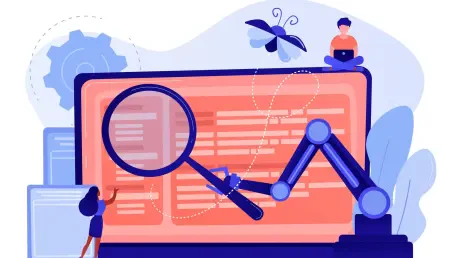Imagine a quality assurance (QA) team scrambling to test a web application across multiple browsers and devices, juggling a dozen disjointed tools, and losing precious hours to setup and context switching. This chaotic reality plagues many software testing professionals, where fragmented workflows hinder productivity and compromise test coverage. Enter a potential solution from BrowserStack Inc., a leading name in web and mobile testing, with their innovative Testing Toolkit—a Chrome extension designed to unify manual testing processes and streamline efficiency.
Unveiling the Toolkit’s Core Purpose
BrowserStack has built a reputation for delivering robust testing solutions, and their latest offering aims to tackle the inefficiencies of manual web testing head-on. The Testing Toolkit consolidates over ten essential utilities into a single, user-friendly platform, accessible directly from the Chrome browser. This integration seeks to eliminate the clutter of multiple extensions and apps, providing QA teams and developers with a seamless experience to ensure software quality.
The significance of this tool lies in its ability to address a critical industry pain point: the lack of cohesive testing resources. By offering a centralized hub for diverse testing needs, it promises to enhance productivity and ensure comprehensive coverage across various environments. This review delves into the specifics of what makes this extension a notable contender in the testing landscape.
Diving into Features and Performance
Cross-Browser and Responsive Testing Capabilities
One of the standout aspects of this toolkit is its support for cross-browser testing across more than 3,500 browser combinations. This extensive range ensures that web applications function flawlessly, regardless of the user’s chosen platform or browser version, a crucial factor in today’s diverse digital ecosystem.
Additionally, the responsive testing feature allows testers to verify how designs adapt to different screen sizes and devices. This capability is vital for ensuring a consistent user experience, whether on a desktop, tablet, or smartphone, addressing a key concern for modern web development where adaptability is non-negotiable.
Accessibility and Visual Precision Tools
Ensuring compliance with web accessibility standards is another area where the toolkit shines. Its accessibility checking features help identify barriers that might exclude users with disabilities, aligning with global standards and promoting inclusive design practices that are increasingly mandated in many sectors.
Complementing this, the visual overlay comparison tool offers precision in detecting design discrepancies. Testers can spot even minor inconsistencies in layouts or elements, ensuring that the final product matches the intended design specifications down to the pixel, a feature that saves significant debugging time.
AI-Driven and Automation Enhancements
Harnessing the power of artificial intelligence, the toolkit includes AI-powered test case generation to craft effective scenarios quickly. This reduces the manual effort required to brainstorm and document test cases, allowing teams to focus on execution rather than preparation.
Moreover, automation features streamline repetitive tasks, while the one-click bug reporting mechanism captures detailed data such as screenshots, console logs, and network information. This comprehensive reporting minimizes the back-and-forth often associated with defect documentation, enhancing communication between testers and developers.
Workflow Utilities for Greater Efficiency
Beyond core testing functions, the toolkit offers practical utilities like cookie and cache management, JSON formatting, and HTTP request/response modification. These tools reduce the need for external resources, consolidating essential functions into a single interface for tester convenience.
Such utilities contribute to accuracy by minimizing human error in manual configurations. They also save time on routine tasks, allowing professionals to allocate their focus to more complex testing challenges, thereby optimizing the overall workflow.
Aligning with Industry Demands
The software testing industry has seen a growing demand for integrated, lightweight tools that cut through the clutter of fragmented processes. BrowserStack’s response with this Chrome extension reflects a keen understanding of this trend, prioritizing simplicity without sacrificing functionality, a balance that many competitors struggle to achieve.
This user-centric design aligns with broader industry shifts toward efficiency and consolidation. By incorporating advanced technologies like AI—evident in their broader initiatives starting from this year through to 2027—the company demonstrates a commitment to staying ahead of the curve, setting a benchmark for innovation in testing solutions.
Real-World Impact and Applications
For QA teams, developers, and even small businesses, the toolkit offers enterprise-grade capabilities at no cost, a factor that democratizes access to high-quality testing resources. This accessibility is particularly beneficial for smaller entities that might lack the budget for premium tools, leveling the playing field.
Practical use cases include ensuring web designs meet accessibility standards for broader audience reach or leveraging detailed bug reports for faster debugging cycles. Sectors like e-commerce, education platforms, and beyond can harness these features to deliver robust, user-friendly web experiences tailored to their unique needs.
Navigating Challenges and Limitations
Despite its strengths, adopting the toolkit may present a learning curve for newcomers unfamiliar with integrated testing environments. Navigating the array of features might initially seem daunting, requiring some onboarding to fully utilize its potential.
Furthermore, while comprehensive, certain features may lack the depth of standalone specialized tools dedicated to niche testing aspects. BrowserStack continues to refine the extension based on user feedback, indicating an intent to address such gaps and expand compatibility with diverse workflows over time.
Reflecting on the Toolkit’s Contribution
Looking back, the Testing Toolkit from BrowserStack proved to be a significant stride in addressing the fragmented nature of manual web testing. Its comprehensive feature set, ease of integration, and free availability stood out as key strengths that empowered diverse teams to enhance their QA processes with minimal friction.
For those considering adoption, the next step involves exploring how specific features can align with unique project needs, potentially starting with pilot testing on smaller initiatives. Engaging with BrowserStack’s support and community resources also offers a pathway to overcome initial hurdles, ensuring teams can maximize the tool’s benefits in their pursuit of software excellence.









